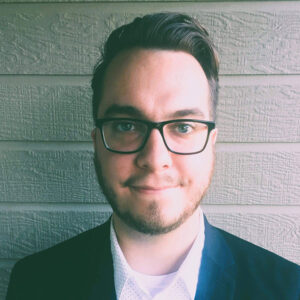By SIOP Members Krystyn Ramdial and Nathaniel Voss
What will industrial-organizational (I-O) psychology look like in 3 years? What about in 100 years? Is there any value in speculating about the future of I-O psychology? We think so!
Futurology (or “futurism”) is an interdisciplinary field that explores what the future might look like and what it could mean for us today. For this blog post, we thought it would be insightful to examine I-O psychology through a futurist lens. We believe a major benefit of a futurist mindset is that it can help I-O psychology maintain – and ideally increase – its impact.
A big part of futurism is actually knowing how not to think about the future. For example, it is not about making perfect predictions, as this is fraught with challenges. For example, consider Ken Olsen who in 1977 reportedly said, “There is no reason anyone would want a computer in their home” or Bill Gates who reportedly said in 1994, “I see little commercial potential for the Internet for the next 10 years”. There are also inherent cognitive difficulties when it comes to future speculation. Some example futurist ‘fallacies’ (from the book The Skeptics Guide to the Future) are (1) assuming that objectively superior technology will always win out, (2) assuming we will do things differently because we can, and (3) extrapolating existing technology into the future without considering new and potentially disruptive technology.
So then, what does futurism mean for I-O psychology? For one thing, a futurist approach can help us balance cutting-edge possibilities and innovation with our ethical obligations as scientist-practitioners. That is, just because a shiny new technology can be used, doesn’t mean it should, and I-O psychologists can help navigate this tension by providing critical, nuanced insights about using these tools (GenAI is a great example of this). A futurist mindset can also shift how we currently approach our work. For example, knowing that technology will continue advancing at a rapid pace, our field may broaden its engagement from being focused on HR to including a wider portfolio of partnerships like data science, ethics, law, neuroscience, and computer science. With this foundation, let’s dive a little deeper into what the future of I-O psychology might look like and some practical takeaways of this.
When we turn the futurist lens toward selection and talent acquisition (TA), the changes already underway give us clues about what’s next. Technology is rapidly reshaping how we find, evaluate, and connect with talent. Let’s explore what this could look like in both the near future and farther down the road.
Short-Term (Next 5–10 Years)
The most immediate shifts are driven by artificial intelligence and automation. We’re already seeing tools that:
- Nudge recruiters and hiring managers to structure better interviews or recognize bias in real time.
- Automate scoring of work samples and structured interviews, creating consistent evaluation while saving time.
- Integrate multiple data sources—like biodata, assessments, and interviews—into unified dashboards that help recruiters prioritize candidates more strategically.
- Deploy chatbots and virtual assistants to manage the early funnel, answering questions and guiding candidates through the process.
Candidate experience is also evolving. Personalized and adaptive assessments can tailor themselves to the job, the industry, and even the candidate’s responses. In parallel, bias mitigation tools, such as automated audits and explainable AI, will become increasingly standard, allowing organizations to demonstrate fairness to regulators, leaders, and candidates alike.
And let’s not forget about the changing nature of careers themselves. The “job for life” model appears to be diminishing. The next decade could normalize shorter job cycles and project-based roles. TA functions may shift to designing and filling “short bursts of value” rather than focusing solely on long-term retention.
Long-Term (10–20+ Years)
Looking further ahead, some possibilities sound more like science fiction, but may not be as far off as we think.
- Neuro-based and biometric selection could enter the mix, with brain-computer interfaces, cognitive mapping, or even biomarkers offering new (and ethically complex) data points for predicting success.
- Immersive job previews might become standard, with candidates stepping into holographic or VR environments that let them “try the job” before accepting an offer.
- Professional avatars may evolve to replace live videos with AI-powered digital stand-ins that not only mirror a candidate’s likeness but also adapt tone, expressions, and even language in real time, creating virtual interactions where digital presence becomes the norm.
- Global AI matching engines could act like universal marketplaces, instantly connecting talent with employers based on skills, values, and cultural alignment—no application required.
- Speaking of no application: passive recruitment and selection may become the default. Instead of candidates applying, organizations could tap into vast streams of public data to identify and approach the best fits.
These scenarios bring plenty of excitement and possibility, but they also raise profound questions about privacy, fairness, and human dignity. That’s where I-O psychologists can and should play a critical role: helping organizations navigate which tools add real value, which innovations respect people, and which ones might cross a line.
Practical Takeaways and Recommendations
So, how can I-Os prepare for this future? We recommend a few practical actions:
- Be anticipatory, not reactionary. Initiate and show up early to conversations about the future of work rather than catching up after others have framed the discussion.
- Learn how to speak with technology experts. Build fluency so that you can collaborate with and influence experts from other fields who are making cutting-edge discoveries that will shape the tools of tomorrow.
- Expand interdisciplinary collaborations. Take advantage of the blurring boundaries between fields. Partner across disciplines like law, neuroscience, and consumer insights to combine knowledge and showcase the value that I-O can bring.
- Commit to lifelong learning. Set and regularly revisit your development goals, and actively apply your new skills (e.g., AI literacy, design thinking, UX/human factors). Formal education is only the beginning. Continuous growth keeps us relevant now and in the future.
- Anchor in I-O psychology’s core strengths. Stay grounded in our field’s timeless skills (e.g., evidence-based practices, psychological principles, ethical decision-making) as you embrace curiosity and change. We are well equipped to test new innovations, refine old approaches, and even challenge our long-held assumptions about the world of work while maintaining the integrity and scientific grounding that defines us as I-Os.
—


About the Authors
Krystyn (Krys) Ramdial, Ph.D., is the Director of Pre-Hire Selection at Procter & Gamble, leading the global strategy behind P&G’s enterprise-wide selection systems, ensuring they are aligned with best practices and the evolving business needs across global markets. Over the last 15 years, Krys has developed a broad portfolio of I-O practitioner experience across consulting, corporate, and nonprofit settings. As an external consultant, she advised public, private, government, and nonprofit organizations. As an internal practitioner, she has led work in employee engagement, training, talent planning, and selection. In addition to her corporate role, Dr. Ramdial serves as Chair of SIOP’s Visibility Committee, teaches undergraduate psychology courses at the University of Cincinnati, and sits on the Sound Child Care Solutions Board of Directors.
Nate Voss, PhD, is a Senior Scientist at the Human Resources Research Organization (HumRRO) and has 5+ years of experience using applied research, human capital, and evidence-based principles to enhance the effectiveness of public and private sector organizations. His expertise includes survey research methods, psychometrics, machine learning, natural language processing, personnel selection, and job analysis. Nate is also actively involved within the industrial-organizational (I-O) psychology community and is a member of the editorial board of the Journal of Business and Psychology, the Chair-in-Training of the Society for Industrial and Organizational Psychology (SIOP) Visibility Committee, a member of the Personnel Testing Council of Metropolitan Washington (PTCMW), and has over 30 scientific publications, conference presentations, and invited talks.
—
The views expressed in this article are those of the author and do not necessarily reflect the views of the Society for Industrial and Organizational Psychology or its affiliates.
If you are interested in submitting an article for Thought Leadership for a Smarter Workplace, email SIOP Senior Brand and Content Strategist Amber Stark at astark@siop.org.
Post Type
Thought Leadership for a Smarter Workplace
Topic
Future of Work
Related Articles
Sorry, we couldn't find any posts. Please try a different search.

